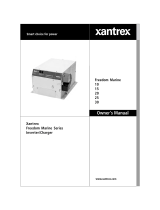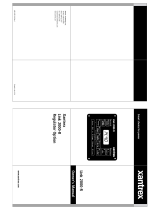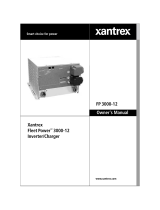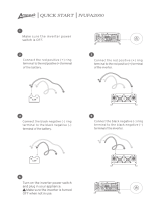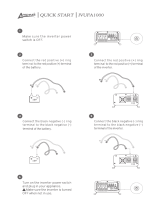
7
OPERATION
The Freedom 458 Inverter/Charger provides
120 volt AC power from auxiliary DC batteries,
automatic battery charging and automatic AC
transfer switching between an external AC
source and inverter mode.
External AC Power
When external AC power is available, the
three-stage battery charger, transfer switching,
and Power Sharing automatically function.
When external AC power is not available
and the INVERT switch is ON (either through
the auxiliary switch or the INVERT button on
the remote), the inverter will automatically turn
ON. If the INVERT switch is OFF (the INVERT
LED will not be illuminated), the inverter will be
OFF.
If installed with the Remote Control Panel
or Link Instrumentation, the unit will be set up
and controlled from the remote. Refer to the
remote manual for more information.
Front Panel Controls and Indicators
INVERT MODE
The INVERT push-button switch is
located on the front of the unit and has two
functions:
• Turn the inverter ON/OFF and reset after
a fault condition. Pressing the INVERT switch
turns the inverter ON. The green INVERT LED
will be ON when the inverter is inverting. When
the inverter is ON, pressing the INVERT switch
turns the inverter OFF.
INVERT
CHARGE
• Battery type setup. To enter the battery
type select mode, press and hold the INVERT
switch for five seconds. The status LEDs will
change from indicating status information to
indicating battery type. The selection of the
battery type is made with the Charge switch.
Turning the INVERT OFF will reduce
battery power consumption to a very low level.
This is recommended if the unit will not be
used for an extended period of time.
CHARGE MODE
The CHARGE push-button switch has
two functions:
• Turn the charger ON and OFF
If external AC is present, pressing the
CHARGE switch will turn the charger ON.
The green CHARGE LED will be ON when the
charger is charging. When the charger is ON,
pressing this switch will turn the charger OFF.
• Select the battery type
After holding the INVERT switch for five seconds,
press the CHARGE switch to select the battery
type. One of the four LEDs will rapidly blink,
indicating the present battery type setting.
Press the CHARGE switch again to change
the battery type. Continue to press until the
desired battery type is selected. If the CHARGE
switch is not pressed for five seconds, the unit
will return to normal operation and the battery
type selection will have been made.
When the 12-volt input to the unit is
disconnected, the battery type setting is stored
in non-volatile memory. When the unit is
reconnected, the battery type selection
conveniently returns to the setting.
Freedom 20




















